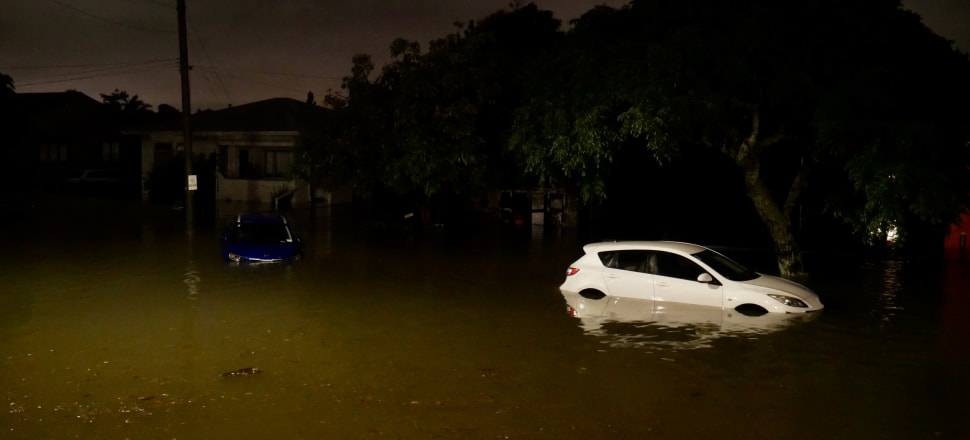
Auckland Mayor Wayne Brown says the number is still a ‘guesstimate’, but big plans for improving resilience and property buy-outs have seen the costs of the flood skyrocket
Six months on from January’s disastrous flooding, Auckland Council remains unsure of exactly how much the rebuild and recovery will end up costing the region.
But as a $1.65 billion flood-resilience initiative was approved for consultation by Auckland councillors just last week, Mayor Wayne Brown’s best guess at the total figure was around $4 billion.
That’s a cost estimate he characterised as “more of a guesstimate” with a high level of uncertainty around it, but said it provided a sense of proportion to the impact of the weather events.
This year’s five severe weather events in the region – kicked off by the rapidly-rising waters of that Friday evening in late January – have created a mountain of decisions for councillors and council staff to work through.
The latest of these is providing full rates relief for flood- and slip-damaged homes, easing the stress on Aucklanders still picking up the pieces six months.
It’s a move that will cost council between $1.2m and $3m.
Initially, council staff recommended a 50 percent reduction in rates for the hundreds of homes that remain uninhabitable, but an amendment by Rodney councillor Greg Sayers to increase this to full relief passed unanimously.
That support is testament to the gravity of the issue – the 20 councillors presided over by Brown have been at odds over many big decisions of late, and were highly polarised over budgetary issues such as selling airport shares just months ago.
But even the cost averse saw fit to vote through rates relief.
However, while a year’s worth of rates have been taken off the shoulders of impacted property owners, the uncertain question of government buyouts will still be weighing heavily.
The details of a proposed buyout scheme are still very much up in the air.
Brown said categorisation work on properties continued, but limited access to geotechnical engineers had put a speed limit on how quickly the work could get finished.
“We are working as fast as we can, but it is complex work,” he said. “There are limited resources in areas such as the availability of experienced geo-tech engineers and we owe it to all ratepayers to proceed carefully.”
Brown said the sudden demand for geotechnical and hydrology experts had made it difficult.
“Nobody employs people on the off chance that you’ll earn money off them when there’s a one-in-20-year rainfall,” he said. “And so one of the reasons that things are slower is that these people just don’t exist.”
Brown wanted to make sure the consultation documents for ‘Making Space for Water’ that are soon to be out in front of the public explained this skill shortage.
“Does the consultation… include the ability to give people the idea that we’re not slow because we don’t like them or we’re incompetent – it’s just that these are specialists… of which there are a limited number in New Zealand.”
Nevertheless, a large team is being assembled to help with the categorisation process, many who have been taken away from business as usual at council’s Healthy Waters department due to a lack of consultant resources.
Healthy Waters general manager Craig McIlroy said he’d be “reaching into our work programmes to make sure that we give that process the maximum support. We’ll also be looking into elsewhere in the organisation where we’ve got spare capacity and capability to help as well, so we can do all this work in a timely fashion”.
Acting council CEO Phil Wilson told the governing body the council was at a “sensitive stage” of negotiations with central government when sharing the costs of new water reforms, which would aim to increase the capacity of stormwater networks.
Wilson acknowledged the eye-watering nature of the figure, but stressed that part of that mammoth tab would be picked up by the crown.
“Four billion dollars is a rather confronting figure and we must stress that this is an overall envelope – the potential total cost to Auckland, not the cost to be borne in its entirety by Auckland Council ratepayers,” he said. “Discussions on cost-sharing arrangements are continuing with central government.”
The figure reported earlier this year for the cost of the council’s operational response to the weather events and returning assets to their previous service levels would be somewhere between $900m and $1.2b.
It’s a cost that seems to more or less quadruple once buy-outs and substantial infrastructure updates are worked in.
The latter includes 12 sites across the region that have been earmarked as good spots for a ‘blue-green network’ – which essentially involves buying out at-risk properties and using the space to create long natural spaces that will serve as temporary reservoirs for floodwaters.
The planned sites can be seen below:







